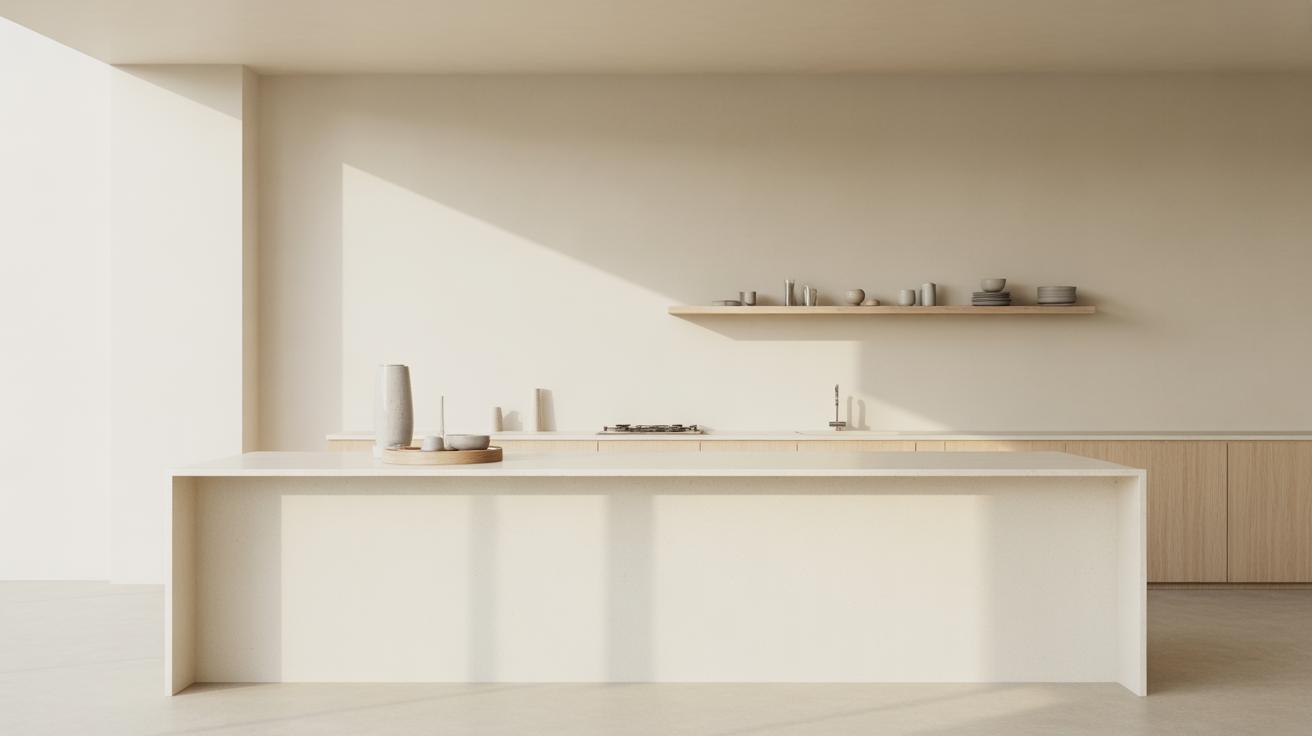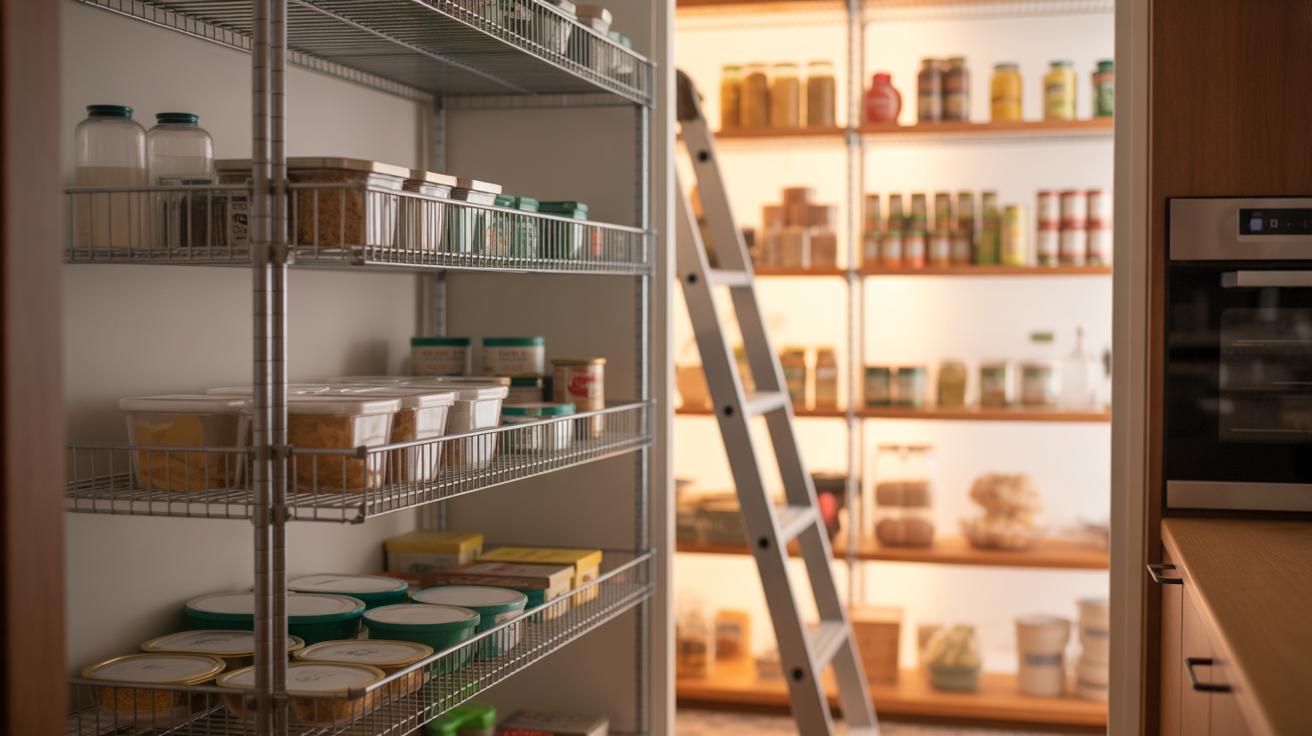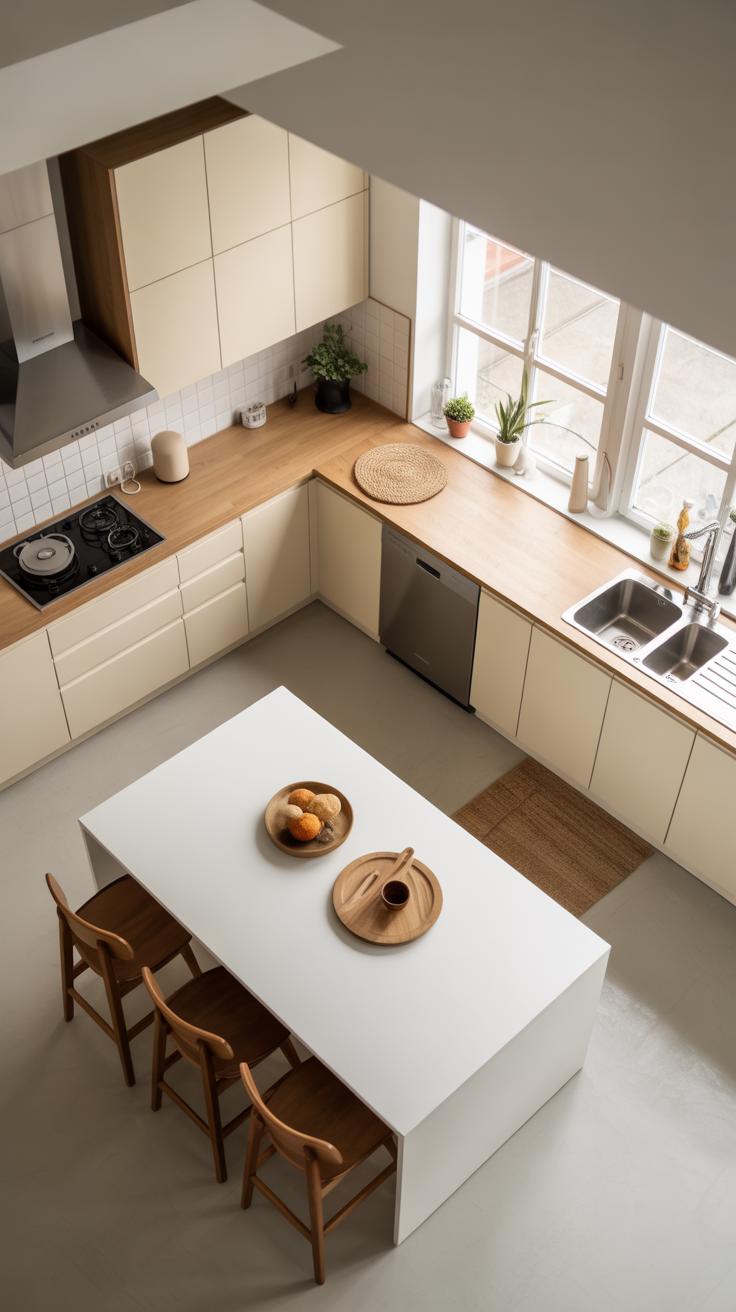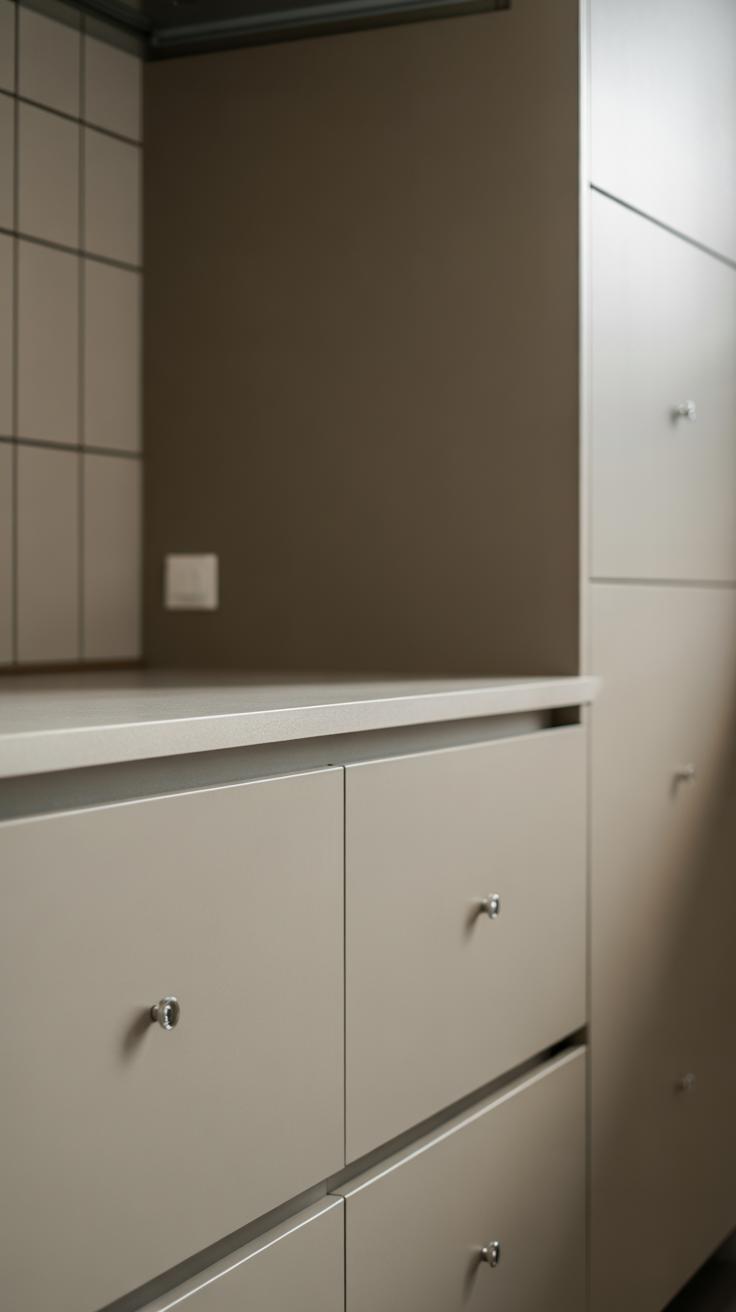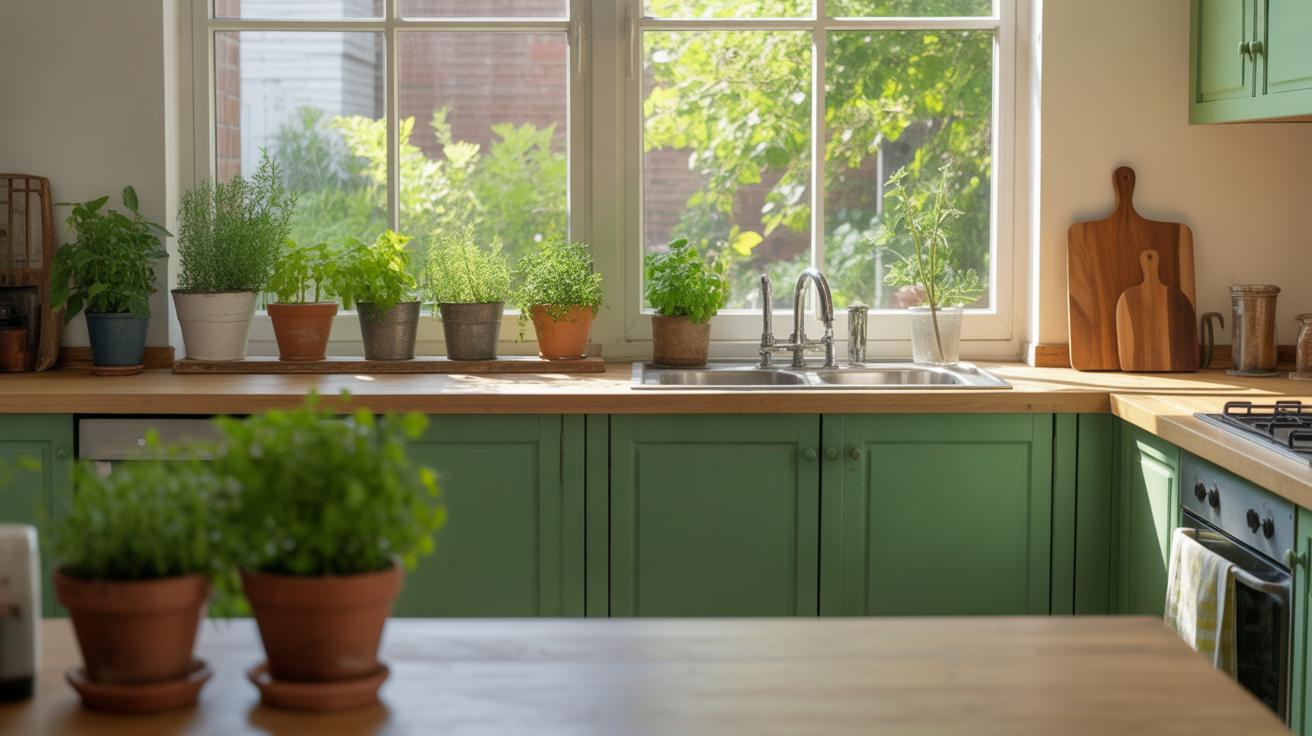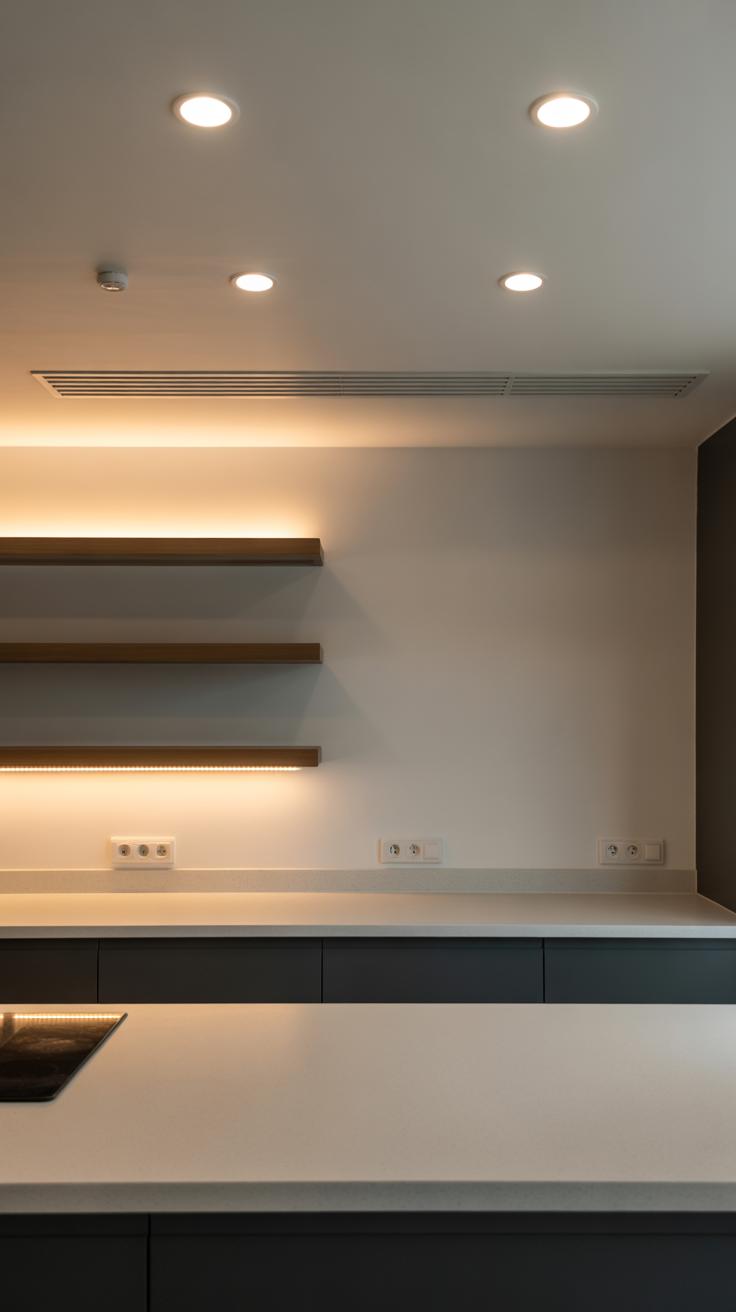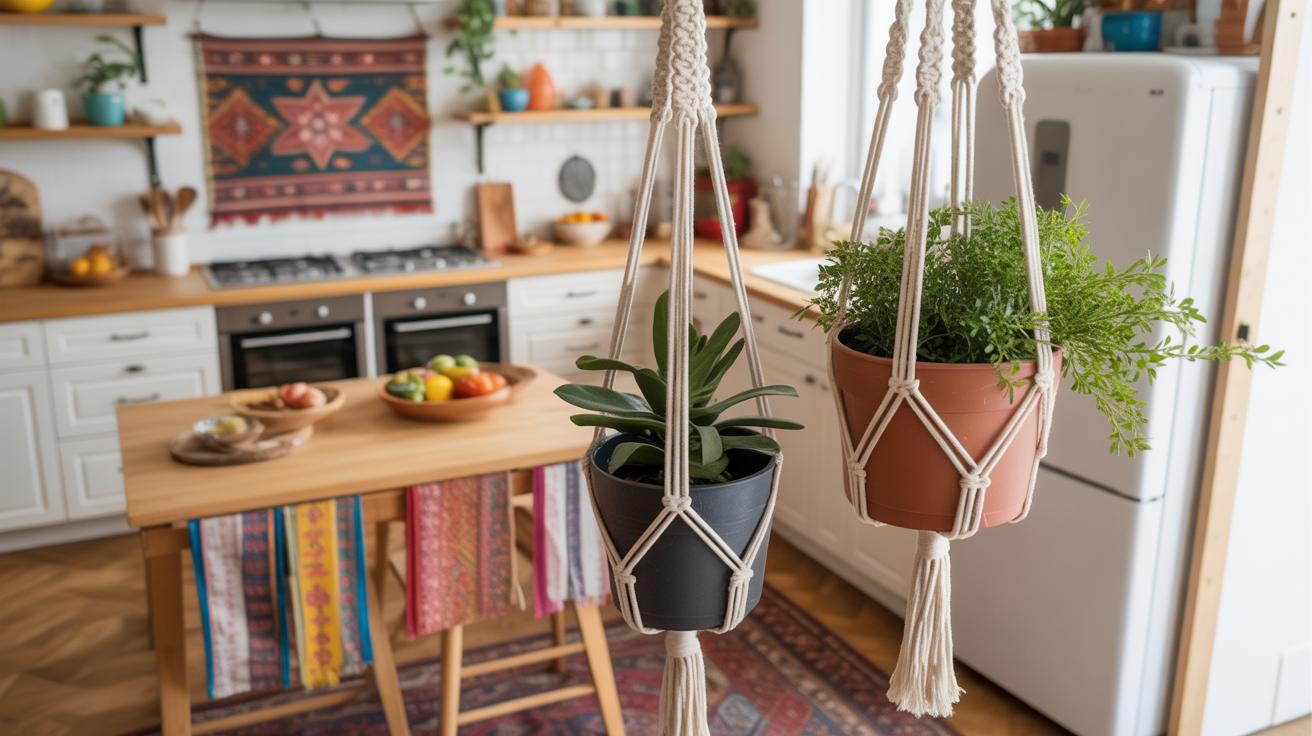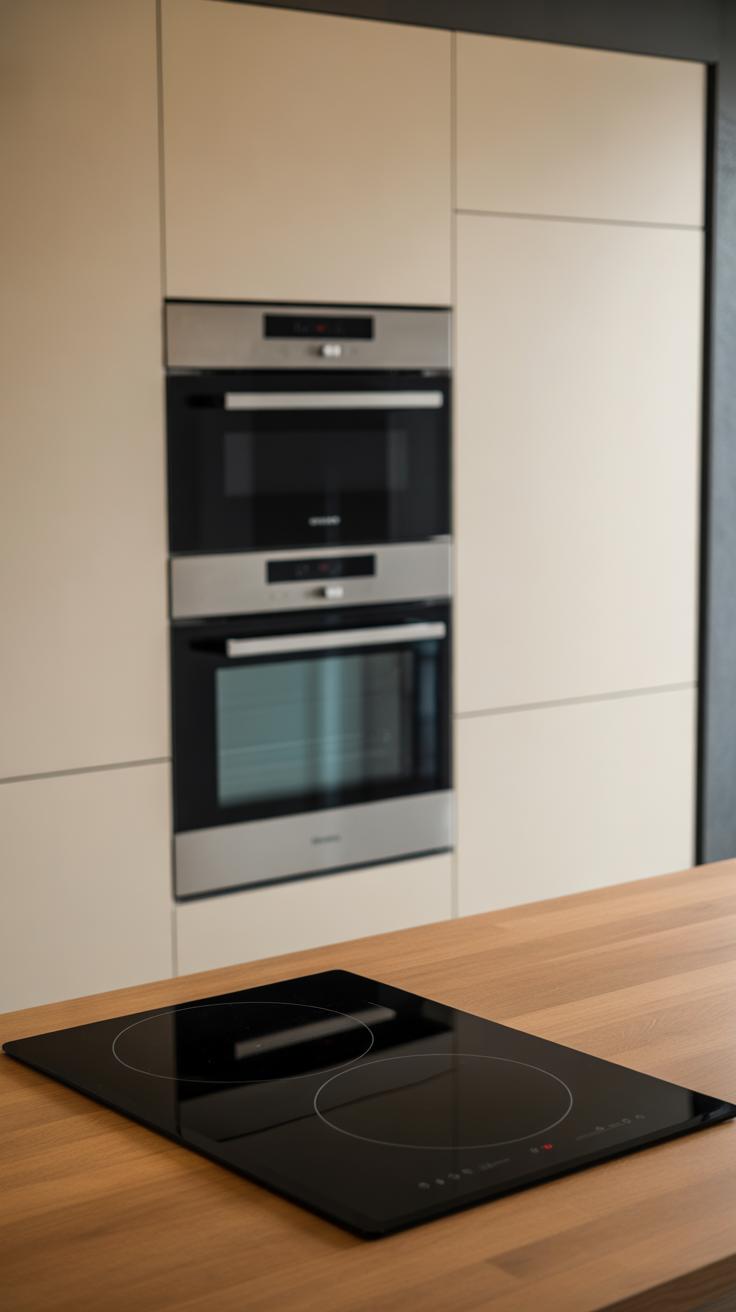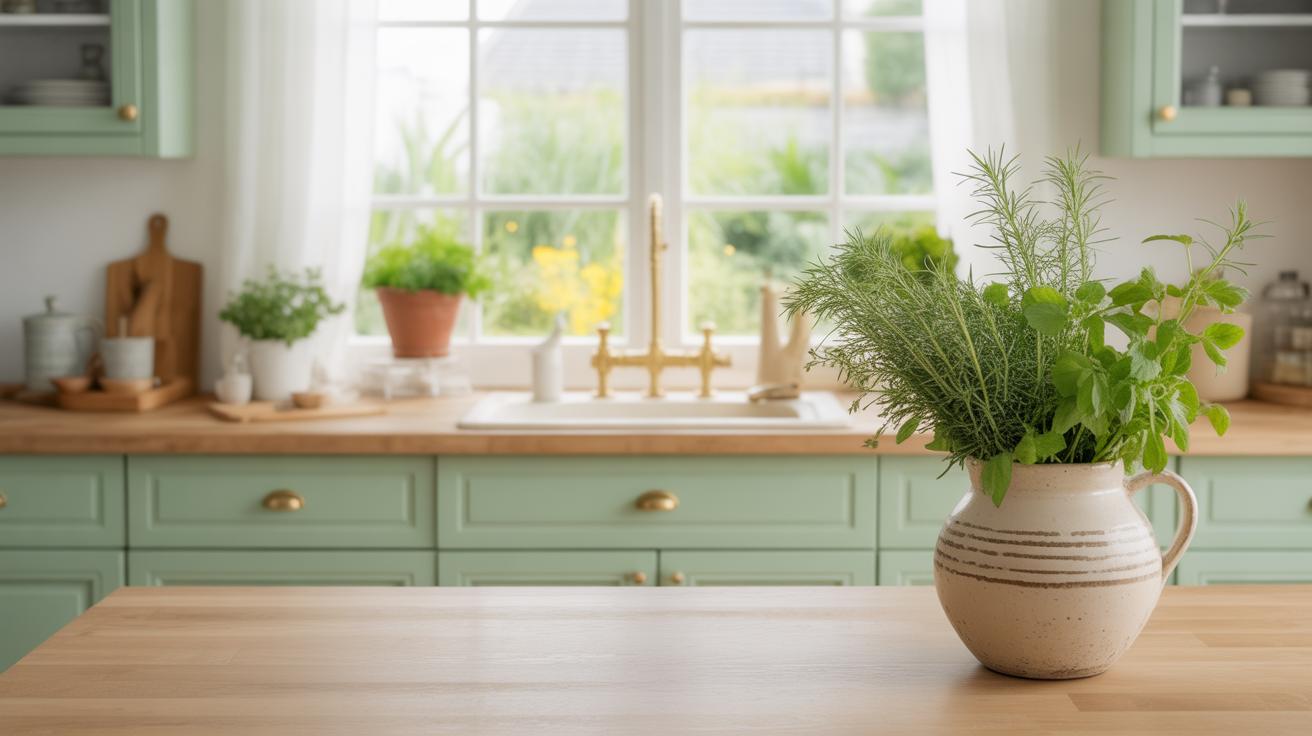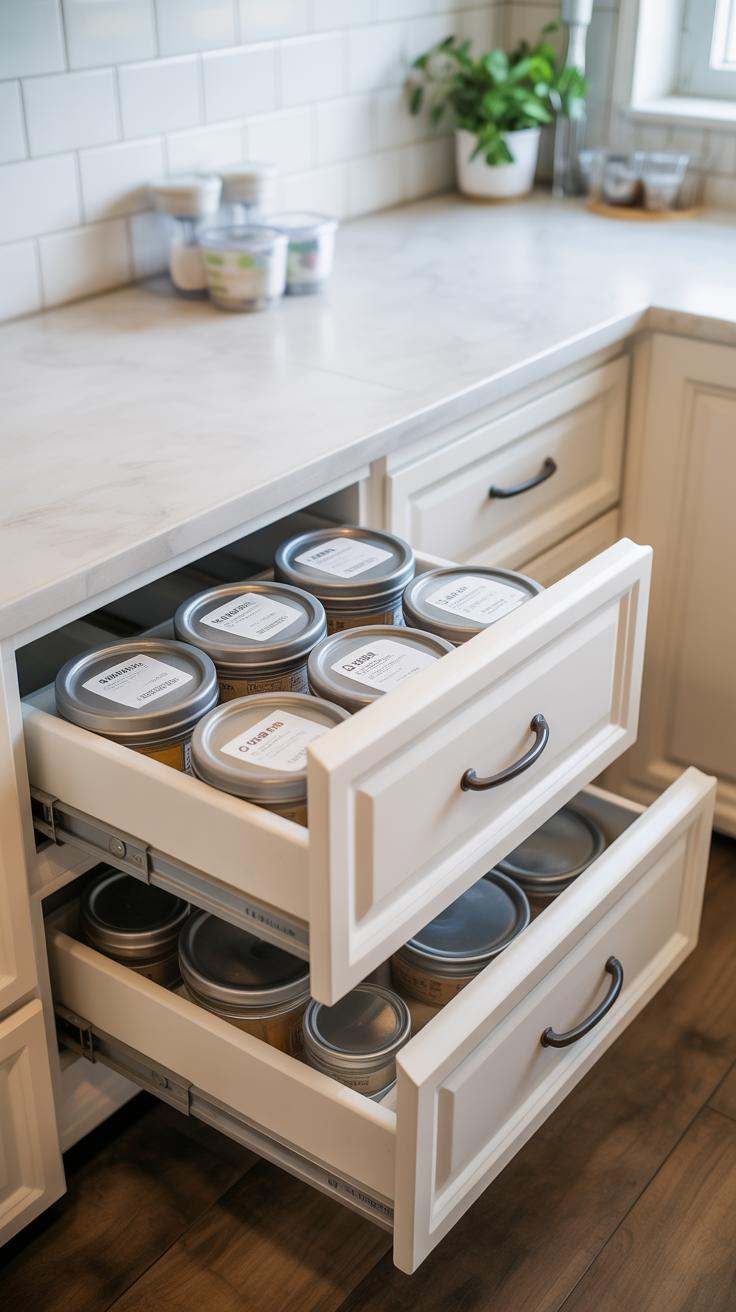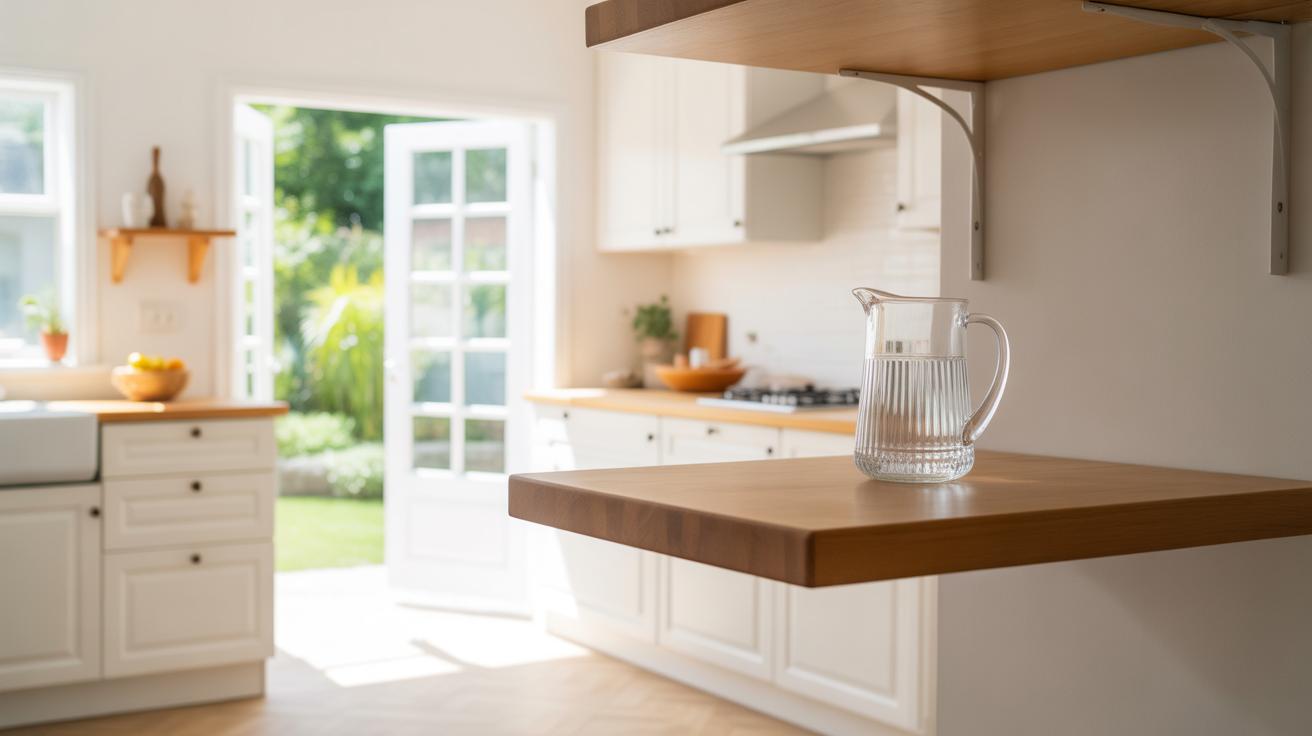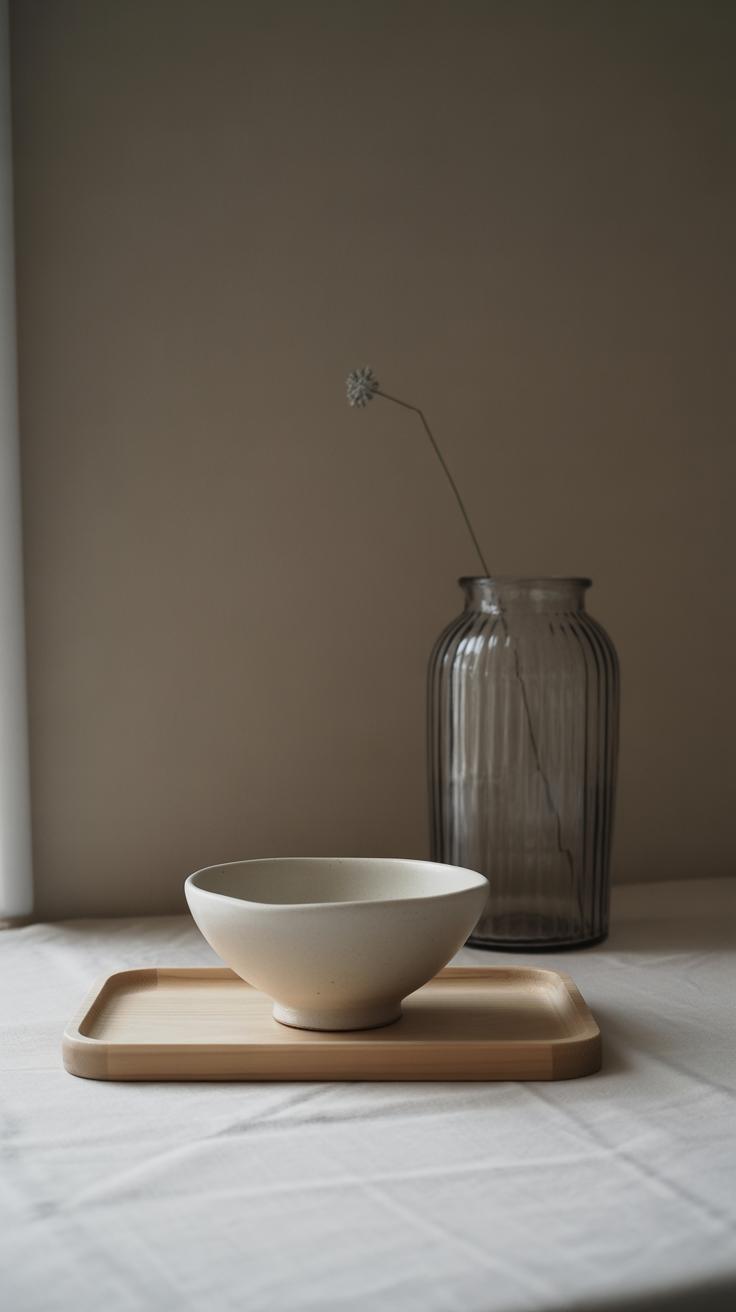Introduction
Minimal kitchen design focuses on creating clean and clutter-free spaces that are both functional and visually appealing. By simplifying the kitchen layout and using smart storage solutions, you can enjoy a space that feels open and easy to work in. This approach emphasizes the use of essential items while keeping everything organized and out of sight.
In this article, you will find useful ideas to help design your minimal kitchen. We will explore practical tips on storage, layout, materials, and colors that make your kitchen neat and stylish. Whether you have a small or large kitchen, these ideas will guide you in creating a space that supports your daily needs and keeps your kitchen looking fresh.
Understanding Minimal Kitchen Design
What is Minimal Kitchen Design
Minimal kitchen design is about keeping things simple and practical. It’s a style that focuses on using only what’s necessary, avoiding any extra decoration or clutter. Imagine open spaces, clean lines, and a layout that feels easy to move around in. Everything you see has a purpose—no unnecessary objects or complicated details.
This design hinges on two main ideas: simplicity and functionality. Cabinets and countertops are often streamlined and plain, while appliances blend into the background instead of standing out. The colors tend to be neutral, like whites or soft grays, creating a subtle atmosphere rather than drawing attention. It might seem a bit stark at first glance, but there’s calm in the order and clarity of a minimal kitchen.
Benefits of a Minimal Kitchen
Living with less in your kitchen can actually make daily life easier. For one thing, cleaning becomes simpler. Fewer surfaces and details mean less to wipe down or dust. It’s easier to see what needs attention, making maintenance less of a chore.
Organization also improves. Since storage is designed to hide clutter away, you’re less likely to leave things scattered around. This keeps counters clear and accessible. I’ve noticed, when my counters aren’t crowded, cooking feels less stressful—like the space itself is helping me stay focused.
Another benefit is the quiet mood minimal kitchens invite. With fewer visual distractions, the room can feel more peaceful. That calm might help you unwind while preparing meals, or just enjoying a moment with a cup of coffee. Still, some might find it too plain, craving a little more warmth or character. It’s a personal balance, really, between neatness and comfort.
Planning Your Minimal Kitchen Layout
When setting up a minimal kitchen, the layout shapes everything—from flow to clutter control. You want a plan that feels open but still puts things within reach. The classic layouts — L-shaped, U-shaped, and galley — each have their quirks and benefits for keeping a space simple.
Take the L-shaped design: It uses two walls, leaving more floor space open and feels less crowded. It’s great if you want clear sightlines across the kitchen, which helps with that clean look. U-shaped kitchens surround you with counters and storage, which is handy but can get cramped if the space is small. Galley kitchens keep everything tight and streamlined with two facing counters; if you don’t have much area, it might actually encourage minimalism because you’re forced to keep only essentials handy.
Then there’s the work triangle – sink, stove, and fridge. Placing these three smartly avoids unnecessary steps while cooking and cleaning. You don’t want them too far apart, but making them too close can feel cluttered or crowded. If your kitchen is on the smaller side, you might need to bend these “rules” a bit, focusing more on what suits your habits instead.
Think about your flow. Where do you prep? Where do you clean? Does your fridge block the path? These questions matter because a minimal kitchen isn’t just about looks, it’s how smoothly your space works for you every day. Personally, I realized my layout wasn’t quite right because I kept bumping into open cabinets while reaching for ingredients—changing that made a noticeable difference.
Selecting Minimalist Kitchen Cabinets
Choosing the right cabinets is key when aiming for a minimal kitchen. You want storage that hides clutter yet offers enough space so everything has a place. Flat-panel cabinets work well here; their smooth surfaces avoid visual noise. They don’t shout for attention and can almost disappear when paired with the right wall color. Handleless designs take this a step further. No knobs or pulls breaking the lines means a cleaner look, though they might require a bit of getting used to when opening.
Frameless cabinets, sometimes called European style, provide a sleek, boxy look. Their straight edges can create a neat, orderly feel. But balance this with usability—sometimes too much rigidity feels cold or uninviting.
Beyond style, the way storage works inside the cabinets often makes or breaks the clutter-free ideal. Pull-out shelves let you access items in the back without digging through everything. Integrated appliances that tuck away behind cabinet doors keep counters clear, and soft-close drawers prevent noisy slamming that can break the peaceful vibe of minimalism.
When I experimented with these features in my own kitchen remodel, the pull-out spice rack was surprisingly useful—suddenly spices weren’t just buried chaos behind closed doors. It made me wonder, though, how much hidden storage one can have before the kitchen starts to feel like a labyrinth. So, it’s a balance: hide clutter, but keep it simple to reach. What kind of storage would fit your habits without turning the kitchen into a puzzle?
Choosing Materials and Colors for Minimal Kitchens
When picking materials for a minimal kitchen, simplicity is key. You want surfaces that look clean but won’t demand constant upkeep—that’s where materials like quartz, solid surface countertops, and laminates come into play. Quartz offers a smooth, consistent look and resists stains and scratches better than many natural stones, which means you’re spending less time worrying about marks or chips. Solid surfaces blend the appearance of stone with an easy-to-repair quality, while laminates, though often underrated, can give you a sleek look without breaking the bank—plus, they wipe clean in an instant.
It’s tempting to think that more natural materials always feel warmer, but their practicality is just as crucial here. For example, natural wood can be gorgeous, but it needs sealing and careful maintenance—not always ideal if you want to keep things effortless. Sometimes, balancing the desire for a softer look against how much work you want is tricky.
As for color, neutral palettes do the heavy lifting. Soft whites open up space and reflect light, creating an airy mood. Gentle grays act as a quiet backdrop that lets other details stand out—or recede, if that’s what you prefer. Then there are natural wood tones that add warmth without overwhelming the senses. Together, these shades give a calm, uncluttered feeling—though, admittedly, it’s easy to slip into a space that feels a bit too sterile if not careful. Striking the right balance between warmth and simplicity might take some experimenting.
Try to imagine how colors change through the day’s light in your kitchen—maybe a shade that looks serene in sunlight becomes dull in the evening. These subtleties are worth noting when deciding what you want around you every day.
Lighting Ideas for a Minimal Kitchen
Lighting plays a quiet but powerful role in a minimal kitchen. Natural light, if you’re lucky enough to have plenty, can highlight the simplicity of your space and keep everything feeling open and airy. Daylight tends to flatter clean lines, making surfaces look crisp and uncluttered. But what if your kitchen isn’t blessed with large windows? That’s where artificial lighting steps in—not to complicate, but to complement.
Rather than relying on a single central fixture, think about layering your lighting thoughtfully. Task lighting under cabinets is a practical choice. It brightens the work areas without adding bulky lamps or fixtures that might break the minimal vibe. A strip of subtle LED under cabinet lighting can make chopping or reading recipes easier and keeps the ceiling clean and clear.
Ambient lighting should fill the room softly, avoiding anything too harsh or busy. Imagine recessed lights or simple ceiling mounts with sleek designs, so you don’t feel like you’re staring at a lighting setup instead of cooking. You might find yourself adjusting the light intensity through dimmers, which creates a calmer atmosphere when you’re not cooking, perhaps for a meal or a quick coffee break.
Have you thought about balancing cold and warm light? A cooler tone can make surfaces feel more clinical but clearer, while warmer tones add a touch of comfort without cluttering your look. Maybe a mix, depending on the time of day or task, would suit your kitchen’s mood.
Overall, lighting in a minimal kitchen isn’t just about brightness; it’s about highlighting what matters without shouting for attention. It’s a quiet helper, really, shaping the room’s character without complicating the space. You might be surprised how much subtle lighting shifts your perception of minimalism.
Essential Appliances for a Minimal Kitchen
Choosing appliances for a minimal kitchen is more complicated than just picking the smallest or prettiest models. You want devices that blend quietly into the background yet still meet your daily needs without making the space feel crowded. Sometimes, a larger appliance with simple lines feels less chaotic than multiple smaller gadgets scattered around.
Choosing Compact and Integrated Appliances
Built-in appliances create that neat, uniform look many minimal kitchens aim for. Think ovens or microwaves tucked into the cabinetry instead of sitting on countertops. Compact appliances, too, can make a big difference—they don’t demand too much room but still do the job. You might shy away from big stand-alone units, but compact or integrated pieces save precious counter and floor space, which can feel surprisingly freeing.
Using a combination of these helps maintain clean surfaces and uninterrupted lines. For example, a slim dishwasher drawer instead of a full size can lighten the visual weight, though you should ask yourself if the smaller capacity truly fits your cooking habits.
Keeping Appliances Organized
Small appliances often become clutter culprits—coffee makers, toasters, blenders all vying for spot on the counter. Storing them out of sight when not in use keeps the space calm. Pull-out shelves, dedicated appliance garages, or easy-access cabinets can hide these items but still keep them ready.
Sometimes you realize you never use certain devices enough to justify leaving them out. Decluttering doesn’t mean deprivation but rather deciding what appliances deserve a permanent place. Try to resist the urge to keep everything visible “just in case.”
Decluttering and Organizing Your Kitchen
Getting your kitchen clutter-free isn’t a one-time event. It’s more like peeling back layers slowly—and sometimes you find things you forgot you even had. Start by sorting through everything: utensils, gadgets, pans, and that drawer you never open. Ask yourself, do you really use this? Would you miss it if it disappeared? Being honest here helps—keep only what serves a purpose or brings you some joy.
Try chunking items into categories: daily use, occasional, and rarely. The rare stuff? Better stored out of sight or passed on. When you face that mound of random kitchen tools, it can feel overwhelming, but breaking it into smaller tasks makes it manageable. Honestly, I often find myself stuck deciding between “maybe useful” and “why am I saving this?”—it’s okay to be a bit uncertain.
Once you’ve trimmed down, maintaining order daily is a different challenge. A small routine helps—wipe counters immediately after cooking, put things back in their place, and take a quick scan before leaving the kitchen. Consider storage habits that suit you: open shelves where you can see what’s there or drawers with dividers that keep cutlery or spices neat. I’ve noticed that putting things away right after use reduces mess by at least half, but sometimes I skip it anyway, and the clutter sneaks back. Maybe that’s just human nature.
Think about where clutter tends to build up in your kitchen. Is it the countertop near the sink? The top of the fridge? Adjust routines or containers to catch those spots. In the end, the goal isn’t perfect order every second but having a system that nudges you back on track, most days.
Decor and Accessories in a Minimal Kitchen
Add personal touches to a minimal kitchen without tipping into clutter by choosing items that feel intentional and purposeful. The key is not to fill every surface, but to highlight a few pieces that reflect your style and habits. Think about what you truly use or enjoy seeing, rather than what just looks pretty.
Choosing Simple and Functional Decor
Simple containers or jars can work both as storage and decor—a set of matching glass jars for staples or elegant ceramic canisters for utensils adds uniformity while serving a purpose. Small potted plants, like herbs, bring life and a bit of greenery without overwhelming the space. They also invite you to interact with the kitchen in a subtle way, which is nice.
Other options might include a sleek fruit bowl, a minimal cutting board leaned against the backsplash, or a stylish soap dispenser by the sink. The point isn’t to pick random decor but to introduce items that blend form with function, giving you style without the mess.
Maintaining Balance Between Style and Simplicity
It’s easy to want to decorate every corner, especially since minimal spaces can feel a bit stark. Resist this urge by selecting just a few features to highlight. Maybe one piece of art or a favorite vase on an open shelf is enough. Decide what matters most for your mood and avoid pushing too many “nice little things” into your kitchen—they rarely stay minimal for long.
I find it helps to change decor seasonally or when something no longer feels fresh. This keeps the space feeling intentional without accumulating clutter. Remember, minimal doesn’t mean boring—it means making choices that truly fit your daily life, blending style with restraint.
Maintaining Your Minimal Kitchen Over Time
Keeping your kitchen minimal isn’t a one-time job. As your life changes, so do your kitchen needs. What worked a year ago might feel cramped or excessive now—or maybe too empty. It’s a good idea to check in on your setup regularly, say every few months, just to see what still fits and what doesn’t. This doesn’t have to be a big chore. A quick glance can show if you’ve accumulated extra gadgets you barely use or if some storage could be repurposed.
Think about how flexible your storage is. Shelves that adjust height or pull-out drawers can handle different-sized things as your kitchen items or cooking habits shift. Maybe today you have mostly pots and pans, but next year you might cook with more fresh produce or bulk spices. Having adaptable spaces helps you avoid jamming in more stuff just for the sake of it, which often kills that clean, minimal feel.
It’s tricky sometimes because you want to plan ahead but don’t want to clutter. So rather than packing every drawer with “just in case” items, try keeping only what truly fits your current lifestyle. The minimal kitchen keeps evolving, but only if you’re willing to tweak and rethink it every once in a while. Have you noticed how some things slip in unnoticed? Regular review keeps those sneaky bits in check.
Conclusions
With a minimal kitchen design, your space can feel more peaceful and easier to manage. By focusing on essentials and smart storage, you reduce clutter and make your kitchen more enjoyable. Thoughtful choices in materials and colors help keep the area bright and welcoming.
Remember, the goal is to create a kitchen that works well for you. Keep what you need, organize to find things easily, and maintain a clean space. These ideas will help you build a kitchen that meets your needs today and remains simple and inviting for years to come.

